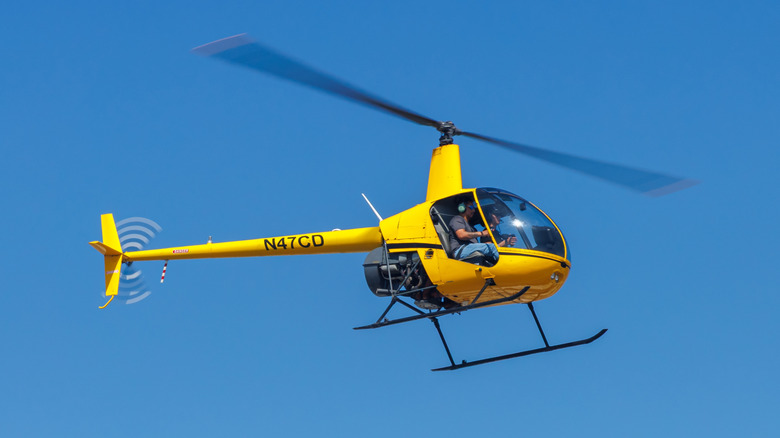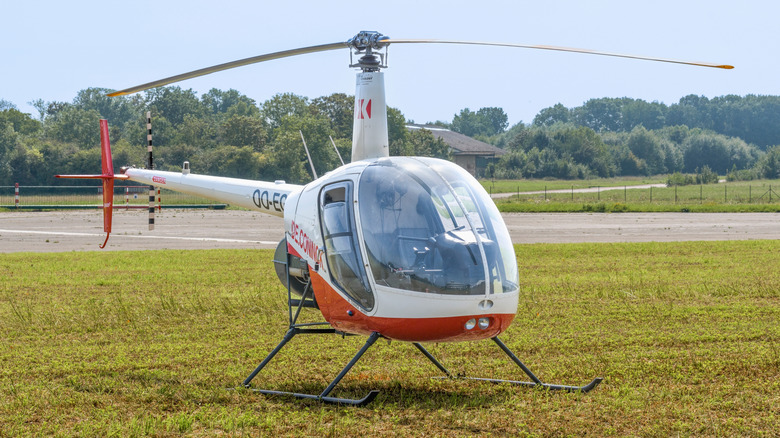What Makes The Robinson R22 One Of The Hardest Helicopters To Fly?
The small Robinson R22, which has one of the 10 fastest helicopter rides ever recorded, doesn't look all that intimidating. But spend some time in the cockpit, and you'll quickly find out why this little chopper has such a big reputation. This compact machine has a way of keeping even skilled pilots on their toes, and there's a reason for that.
The R22 is hard to fly because of how it was built. Originally designed as a lightweight commuter helicopter and not a trainer, it has a low-inertia rotor system that loses speed quickly in the event of engine trouble. That leaves pilots with barely a second to react and enter autorotation, or the rotors can slow past the point of recovery. While small improvements like added tip weights have helped, the helicopter's sensitivity and narrow response window made accidents more common in its early years.
But flying the R22 isn't just about the controls, it's also about how well you fit inside. If a pilot is tall or broad-shouldered, the cockpit can feel pretty cramped, which makes it harder to stay relaxed and nail the chopper's intricate movements. Heavier pilots might even have to cut back on fuel or even fly without an instructor to stay within weight limits. Then there's the shared T-bar control, which feels a bit odd for pilots expecting the usual center stick. All of that adds up to a flying experience that's not just demanding, but downright unforgiving if you're not completely at ease.
Training and Tech Made the Robinson R22 Safer to Fly
While statistics tell a positive story of helicopter safety overall, the Robinson R22 chopper's operational issues led the company to begin offering a specialized safety course in 1982. Aimed specifically at flight instructors, the program later grew into the Robinson Helicopter Pilot Safety Course, which now includes not only the R22 but also the R44 and R66 Turbine models. So far, more than 21,000 pilots have completed the course in the U.S., with many more trained internationally.
Robinson later began improving its tech with the introduction of a new rotor RPM governor in the early 1990s. This innovation made managing rotor speeds much easier, more like what you'd find in turbine helicopters. Thanks to this new equipment and the safety course combined, Robinson managed to cut down on accidents. The Federal Aviation Authority, or FAA, later stepped in with a new regulation in 1995 requiring pilots flying the R22 and R44 to complete specialized training. That same year, the RPM governor became mandatory for all new Robinson helicopters and was also retrofitted onto existing models.
Robinson's last major update to its small copter came in 1996 with the new R22 Beta II, featuring a derated 180-horsepower Lycoming O-360 engine. Designed to improve performance in hot and high-altitude conditions, this same model is still in use today.

